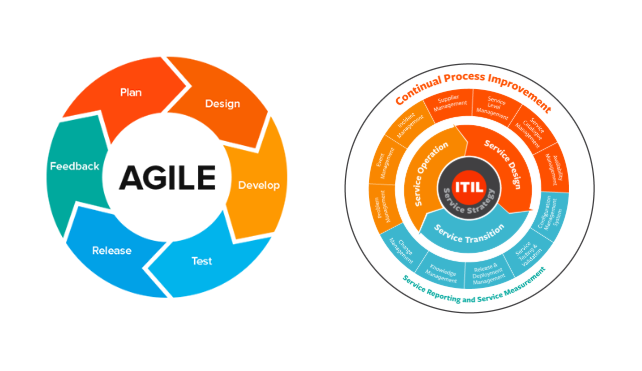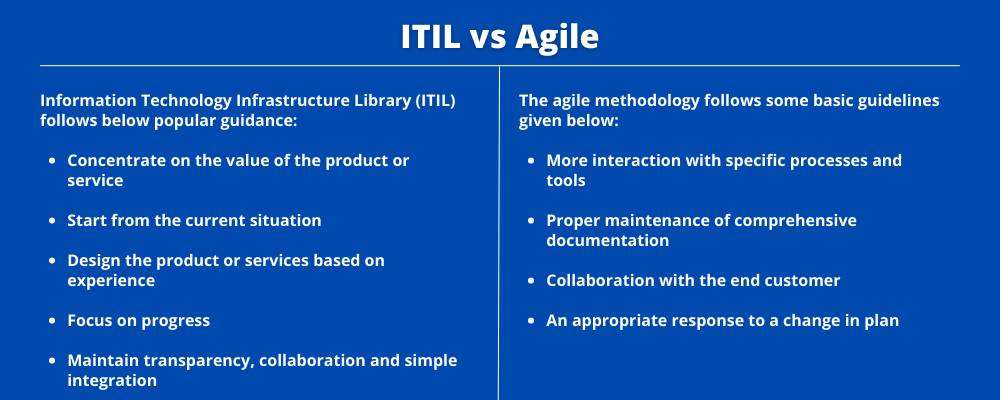There is a present emphasis among its businesses to enhance or expand as efficiently and effectively as possible. To meet their standards, they either already do or intend to start doing something that is consistent with the best practices in their field. Most IT firms with future expansion plans should adopt the Information Technology Infrastructure Library (ITIL). In the case of the most valuable or largest businesses, frameworks like IT service management (ITSM). Improving the organization’s existing services to make them more competitive in a highly competitive market was a primary focus of that kind of framework. Companies may now see clearly that they need to enhance their product quality or, more properly, plan for creating agility to provide better services to their customers more quickly and effectively.
Their primary objective is to launch new technologies and approaches that will make their product or service more desirable and competitive in the global market. Any IT company that wants to improve its software development capabilities should adopt the Agile Software Development policy recommended by industry experts. This policy should cover the fundamentals of IT and software development. Working with a cross-functional team to provide a wide range of features that the end user is accustomed to expecting, elucidating the user’s needs, and then delivering a solution that meets those needs by adhering to an agile methodology has made this approach very popular.
Agile and ITIL has keen importance in the daily routine operations of an organization. Hence, we discussed these concepts in many of our previous articles. In this article, we have discussed some common differences between Agile and ITIL. Simply, we overviewed whether it is right to say Agile vs ITIL or not. We strongly hope it will be really helpful for you to understand the differences between them. So, let’s start with our main topic.
Agile Vs ITIL

When we use ITIL vs Agile, it simply means we are discussing differences between the two concepts. We will overview these differences in two phases. Firstly we would discuss it in a comparison table, and secondly, we would discuss the key differences between them. So, the following are some common differences between Agile and ITIL.
- Agile vs ITIL Comparison Table
When we talk about the differences between Agile and ITIL, it is necessary to know their basic information. That’s why we have discussed them in a comparison table so that we can better understand the differences between them. So, the following is the comparison table between Agile and ITIL.
| The Basis Of comparison | ITIL | Agile |
| General | ITIL, short for “Information Technology Infrastructure Library,” is one of the many established models used by today’s successful IT companies. The IT organization’s growth and any kind of future plan for upgrading their products and services in accordance with customer expectations are aided directly by this framework’s provision of business details in exact view and detailed customer feedback for any of the specific products or services provided by the IT organization. Constantly focusing on a subset of metrics, it then offers suggestions for how to raise the bar on the quality of what’s shipped to customers. | Agile is one of the most well-known frameworks for rapid application development and intelligently meeting a wide range of customer demands. Last-touch customer feedback and enhancing the quality of numerous, faultless functional deployments should be at the forefront of any IT organization’s priorities. When an end-user or client demands various features from a single product or service, and when multiple development teams must collaborate to determine those features, agile methodology is the best way to guarantee high-quality delivery. The agile methodology finds a clever way to deal with these interdepartmental groups of workers by having all of them adhere to the same set of rules. |
| Principles | Information Technology Infrastructure Library (ITIL) follows below popular guidance:Putting one’s attention on the worth of a service or product.Create the item or service in light of your past experiences.Don’t jump to conclusions; instead, begin with what we have right now.Prioritizing development, keen observation, and diligent effort.Kept the lines of communication open, worked together and integrated easily. | Agile methodologies followed some basic guidance like below: Greater participation via targeted methods and apparatuses.The careful upkeep of extensive records.The final client is a partner in our work.Appropriate action must be taken when the plan is altered. |
- Key Differences Between Agile And ITIL
We strongly hope that you have understood the difference between Agile and ITIL by overviewing the above comparison table. We have also given a further explanation about some key differences so that you can better justify the term Agile vs ITIL. So following are some key differences between Agile and ITIL.
- ITIL, or the Information Technology Infrastructure Library, is a set of guidelines for managing IT infrastructure that emphasizes adaptability in the face of change and solicits customer input. This analysis clearly shows IT companies where they stand and where they might improve. As an added bonus, it shows the company’s upper management how their product or service will likely change over time compared to the market at large. It mainly focused on the costs already incurred for that product. The productivity of that organization as a whole based on resource strength and annual earnings by the organization. Customer satisfaction based on some open question answers, revenue generation by that organization over the last couple of financial years, and whether or not SLAs were properly met or not. Whereas agile techniques typically kept a two-part character on the above-mentioned factors related to ITIL. One particular focus is on Productivity and Service Level Agreements. As Agile takes into account deliverables in a proper and prospective manner, this includes understanding client multiple requirements in an acceptable manner, distributing the same multiple developer groups based on functionality, preparing requirement understanding documents based on an individual cross-functional team, preparing one final design document, developer developed their codebase, delivering the same individually, merging and maintaining proper cross-functional te. It also involves post-production support, an implementation strategy, and maintenance of service-level agreements.
- ITIL, the Information Technology Infrastructure Library, is built on a certain sequential framework that, once selected, gives the organization one expected perspective of its growth or more attentive future expectations. By always beginning their calculations with the current state of the organization, keeping a resource-friendly environment. So that no one is overburdened and ensuring that everyone has a healthy work-life balance .This method ensures that the organization’s products and services are valued and that they are developed in accordance with client expectations. On the other hand, Agile approaches would be unable to adhere to a sequential framework, as even the smallest of modifications with no impact must be delivered quickly, or the entire system would become unstable.
Conclusion
Agile and ITIL both are very popular methodologies followed by all IT organizations directly or indirectly. When we talked about the differences between them, we revealed many differences between them. But despite these differences, it would not be right to use the term Agile vs ITIL. It is because whenever we use the term vs for any two concepts, it means they are two opposite concepts. That’s why we said that it would not be right to use vs for these two. It is because they are two different concepts, not opposite; they could perfectly work together. For instance, ITIL ensures the entire business growth of any IT organization and provides future plans very smartly by giving some understandable view. In comparison, Agile ensures smooth delivery to the end customer. Which automatically helps ITIL for capturing company growth and the upcoming future.

